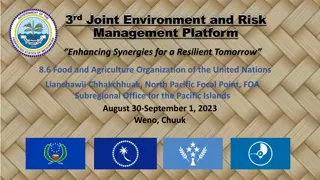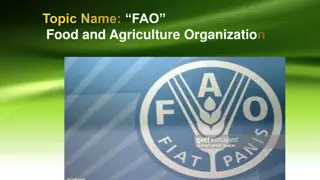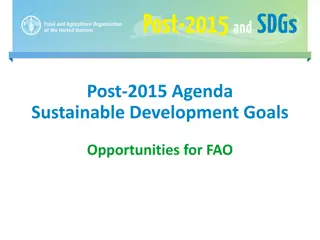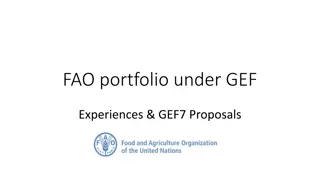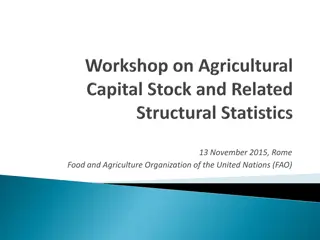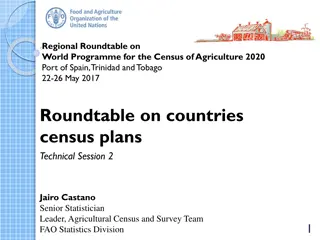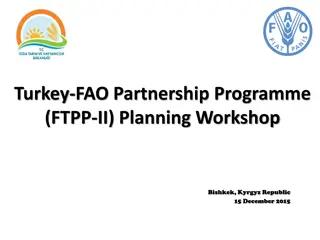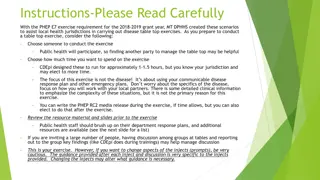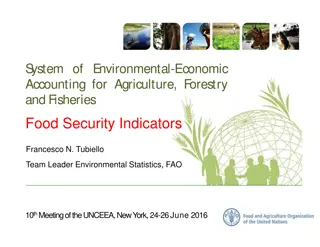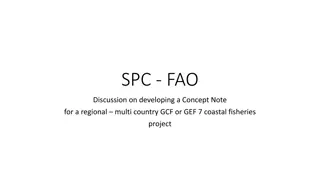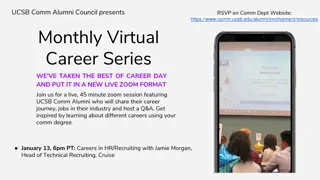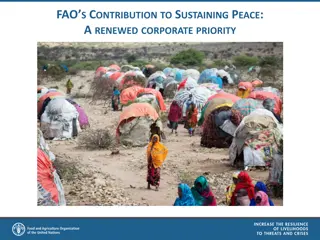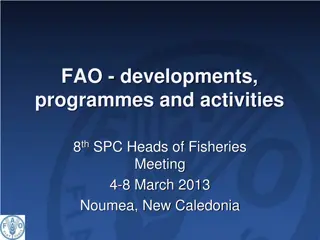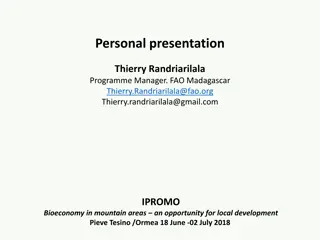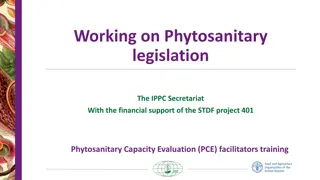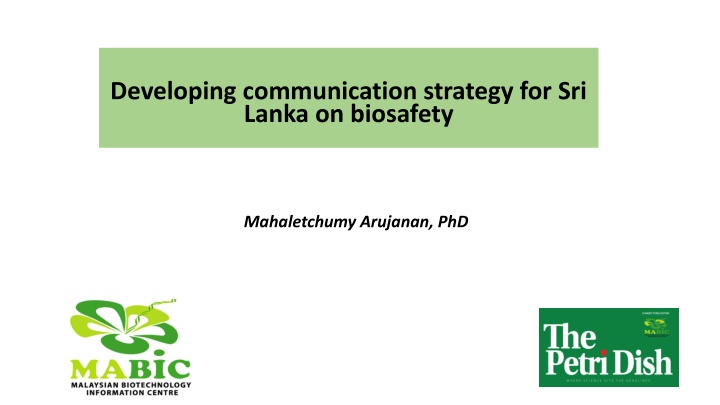
Developing Communication Strategy for Biosafety in Sri Lanka
"Learn why a national communication strategy is crucial for sustainability and local engagement in biosafety projects. Discover how to initiate, develop messages, identify target audiences, and evaluate success through partnerships and communication activities."
Download Presentation

Please find below an Image/Link to download the presentation.
The content on the website is provided AS IS for your information and personal use only. It may not be sold, licensed, or shared on other websites without obtaining consent from the author. If you encounter any issues during the download, it is possible that the publisher has removed the file from their server.
You are allowed to download the files provided on this website for personal or commercial use, subject to the condition that they are used lawfully. All files are the property of their respective owners.
The content on the website is provided AS IS for your information and personal use only. It may not be sold, licensed, or shared on other websites without obtaining consent from the author.
E N D
Presentation Transcript
Developing communication strategy for Sri Lanka on biosafety Mahaletchumy Arujanan, PhD
Why we need a national communication strategy? Sustainability of the project For locals to take charge To ensure coordinated and coherent initiatives Continued funding
How do we start? Develop the messages / information What to communicate? What are the concerns? What to achieve Why communicate? What Why Who When Where How Identify target audience and communicators To whom? Who are the communicators? Pre- and Post-Act, continuously, before approvals? Why at that time? Farms, ports, parliament, school, malls? To capture target audience? Methods, tools seminar, workshop, forum, social media, websites Delivery
Developing a national communication strategy Partners Aspiration Expected results to build trust has credibility Challenges Critics Messages Misinformati on Audience Review - measure how successful your communications efforts have been, modify them if necessary, and repeat again
Steps involved Assemble the communicating team Develop the messages Set goals and timeline Budget Develop resources/tools (brochures, websites, social media, newsletter etc) Identify key spokespersons Develop activities
Developing messages Message maps Supporting facts Preparing messages Supporting facts Supporting facts Point 2 Supporting facts Supporting facts Supporting facts Point 1 Point 3 Supporting facts TOPIC Supporting facts Supporting facts
Discussions Compositions Preparing messages Allergens Feeding trials Human safety Birds Pollen flow Animal safety Cattle/goats Environment What is biosafety? Non-target species Feeding trials Weediness
THANK YOU FOR YOUR TIME ! Maha@bic.org.my

